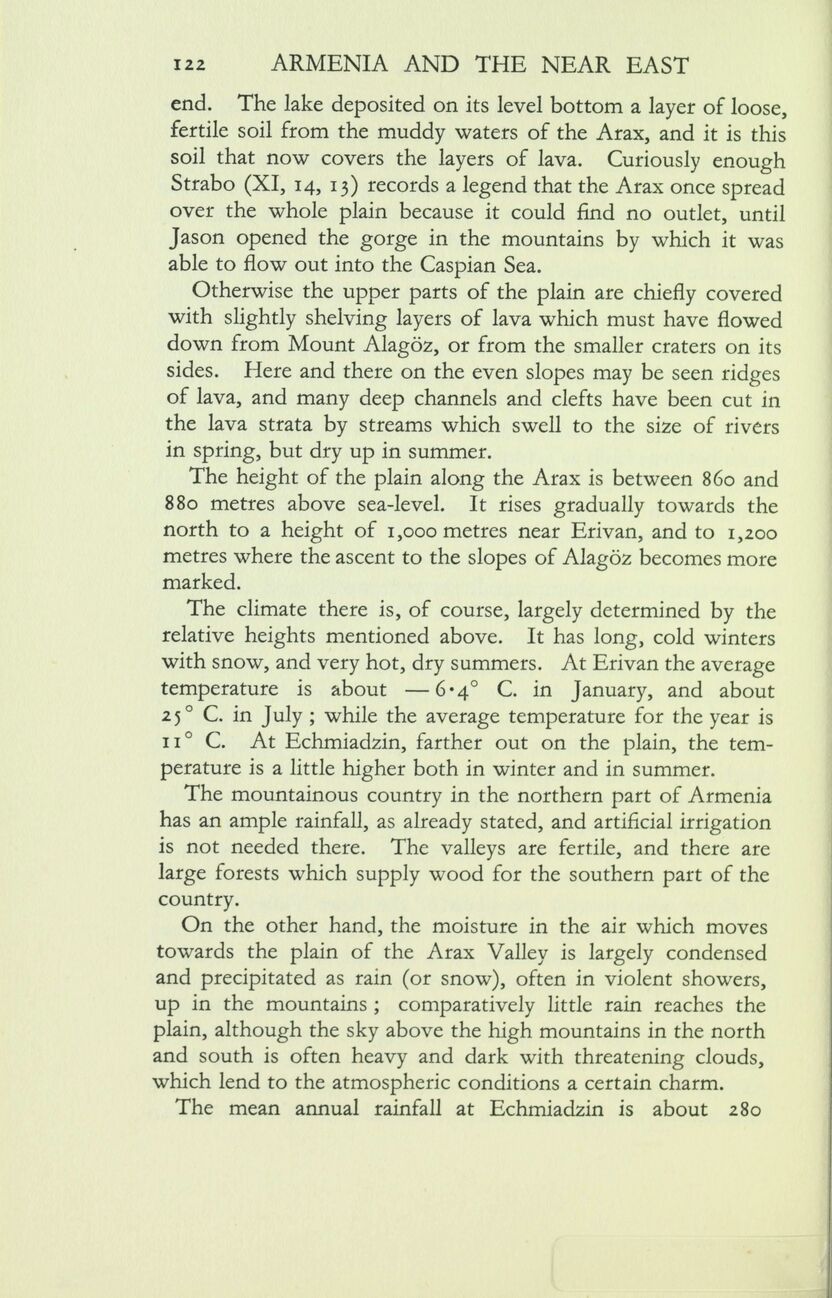
Full resolution (JPEG) - On this page / på denna sida - V. To Erivan. The physical features of Armenia

<< prev. page << föreg. sida << >> nästa sida >> next page >>
Below is the raw OCR text
from the above scanned image.
Do you see an error? Proofread the page now!
Här nedan syns maskintolkade texten från faksimilbilden ovan.
Ser du något fel? Korrekturläs sidan nu!
This page has never been proofread. / Denna sida har aldrig korrekturlästs.
ARMENIA AND THE NEAR EAST
122
end. The lake deposited on its level bottom a layer of loose,
fertile soil from the muddy waters of the Arax, and it is this
soil that now covers the layers of lava. Curiously enough
Strabo (XI, 14, 13) records a legend that the Arax once spread
over the whole plain because it could find no outlet, until
Jason opened the gorge in the mountains by which it was
able to flow out into the Caspian Sea.
Otherwise the upper parts of the plain are chiefly covered
with slightly shelving layers of lava which must have flowed
down from Mount Alagoz, or from the smaller craters on its
sides. Here and there on the even slopes may be seen ridges
of lava, and many deep channels and clefts have been cut in
the lava strata by streams which swell to the size of rivers
in spring, but dry up in summer.
The height of the plain along the Arax is between 860 and
880 metres above sea-level. It rises gradually towards the
north to a height of 1,000 metres near Erivan, and to 1,200
metres where the ascent to the slopes of Alagoz becomes more
marked.
The climate there is, of course, largely determined by the
relative heights mentioned above. It has long, cold winters
with snow, and very hot, dry summers. At Erivan the average
temperature is about — 6-4° C. in January, and about
25 ° C. in July ; while the average temperature for the year is
ii° C. At Echmiadzin, farther out on the plain, the tem
perature is a little higher both in winter and in summer.
The mountainous country in the northern part of Armenia
has an ample rainfall, as already stated, and artificial irrigation
is not needed there. The valleys are fertile, and there are
large forests which supply wood for the southern part of the
country.
On the other hand, the moisture in the air which moves
towards the plain of the Arax Valley is largely condensed
and precipitated as rain (or snow), often in violent showers,
up in the mountains ; comparatively little rain reaches the
plain, although the sky above the high mountains in the north
and south is often heavy and dark with threatening clouds,
which lend to the atmospheric conditions a certain charm.
The mean annual rainfall at Echmiadzin is about 280
<< prev. page << föreg. sida << >> nästa sida >> next page >>